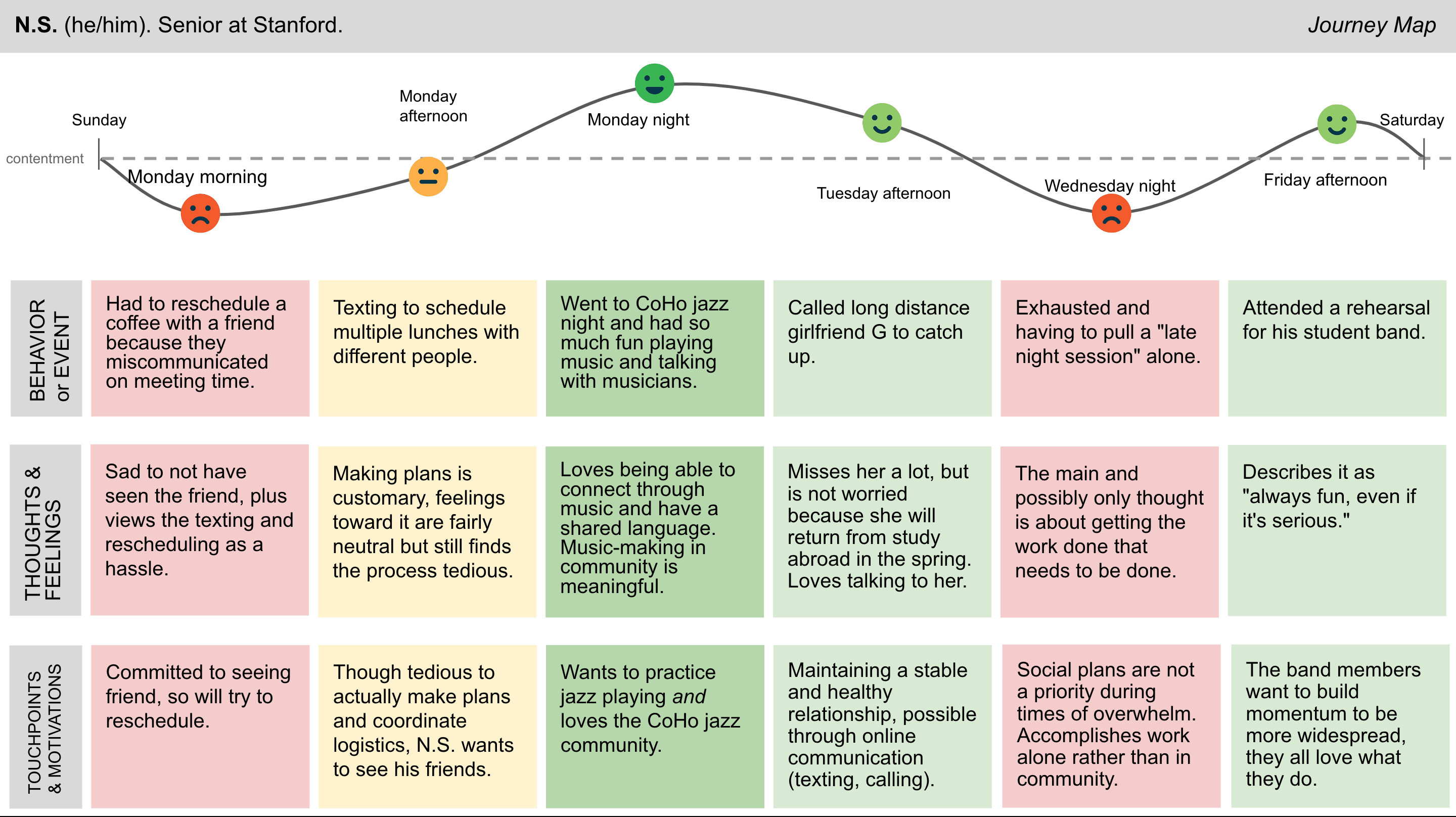After conducting our diary study last week, our team dove into analyzing the data, searching for key findings and synthesizing our findings across 9 participants. Our user base (and thus our participant base in the study) is comprised of students in their final year at Stanford, and we found several overlapping sentiments and themes in our results, including making the most of the finite time remaining, meals as dedicated social time, planned vs. unplanned social time, and more.
But let’s get specific. As part of our analysis, we created proto-personas and journey maps to better get inside the heads of our participants. These proto-personas are based on behavior and compile the representative traits of our participants.
———————————————
The first participant I want to share is S.D., whose persona is below:

S.D. expressed multiple times that she wishes she could do more beyond just eating meals with friends as a way to spend social time together (hence the nickname “Beyond Food”), but that she never seems to get around to making or fulfilling these plans. The journey map of her Sunday through Friday is shown below:

One thing to note is this potential pattern of social time with somebody leading to wanting more — i.e. wishing strongly to do karaoke night after getting dinner, or making plans with somebody she saw only twodays ago because there were “unfinished stories.”
———————————————
Next up is N.S., whose persona is below:

N.S. is one busy beaver, and the deeds of having to schedule and reschedule plans was something that he spoke about as a hassle. He wishes to be present for the people who are important to him, but it’s difficult to coordinate schedules when they are so packed. His journey map is shown here:

N.S.’ unplanned social time far outweighed the times in the week he explicitly dedicated or planned to be social time. He also noted getting social fulfillment from his non-explicitly-social commitment of attending musical rehearsals or performances.
———————————————
As we move forward, we will continue to dive deeper into the data and see where it leads us!



